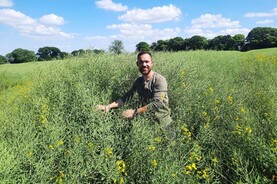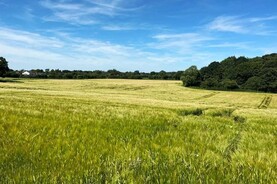Annual grass yields in Northern Ireland are forecast to increase by 17% over the first half of the 21st century, according to Dr David Patterson from the Agri Food and Biosciences Institute (AFBI).
At an open day in Hillsborough, Co Down, on Tuesday, Patterson presented results from a scientific model which predicts how climate change will influence grass growth on local farms. The exercise used climate change predictions from the UK Met Office and a long-standing model, known as GrazeGro, which forecasts how weather will affect grass growth.
“The results predict there will be an increase in the total annual grass yield in the coming decades by almost two tonnes of dry matter per hectare,” Patterson said.
The headline figure is based on an average grass yield of 10.5tDM/ha in 2000, which is forecast to rise to 12.3tDM/ha by 2050.
However, the grazeability of the increased grass yields will decline, farmers were warned.
“Overall grass growth will be higher but more variable, especially from April onwards.
“The growing season will be extended, however utilisation could be more difficult due to higher rainfall,” Patterson said.
Visitors to AFBI Hillsborough were told that for every 1°C increase in temperature, rainfall increases by 7%, and climate change will see average temperatures rise between 1°C to 3°C by 2100.
Aside from impacting future grass growth, research conducted at AFBI has found that climate change has already affected how grass grows on NI farms.
Patterson said GrassCheck data over the past 25 years shows that “the degree of variability” in grass growth has changed over the growing season.
“There has been a shift to more early season growth in March and April, later peak production in June, and much more fluctuations in growth during the summer,” he said.






 This is a subscriber-only article
This is a subscriber-only article











SHARING OPTIONS: